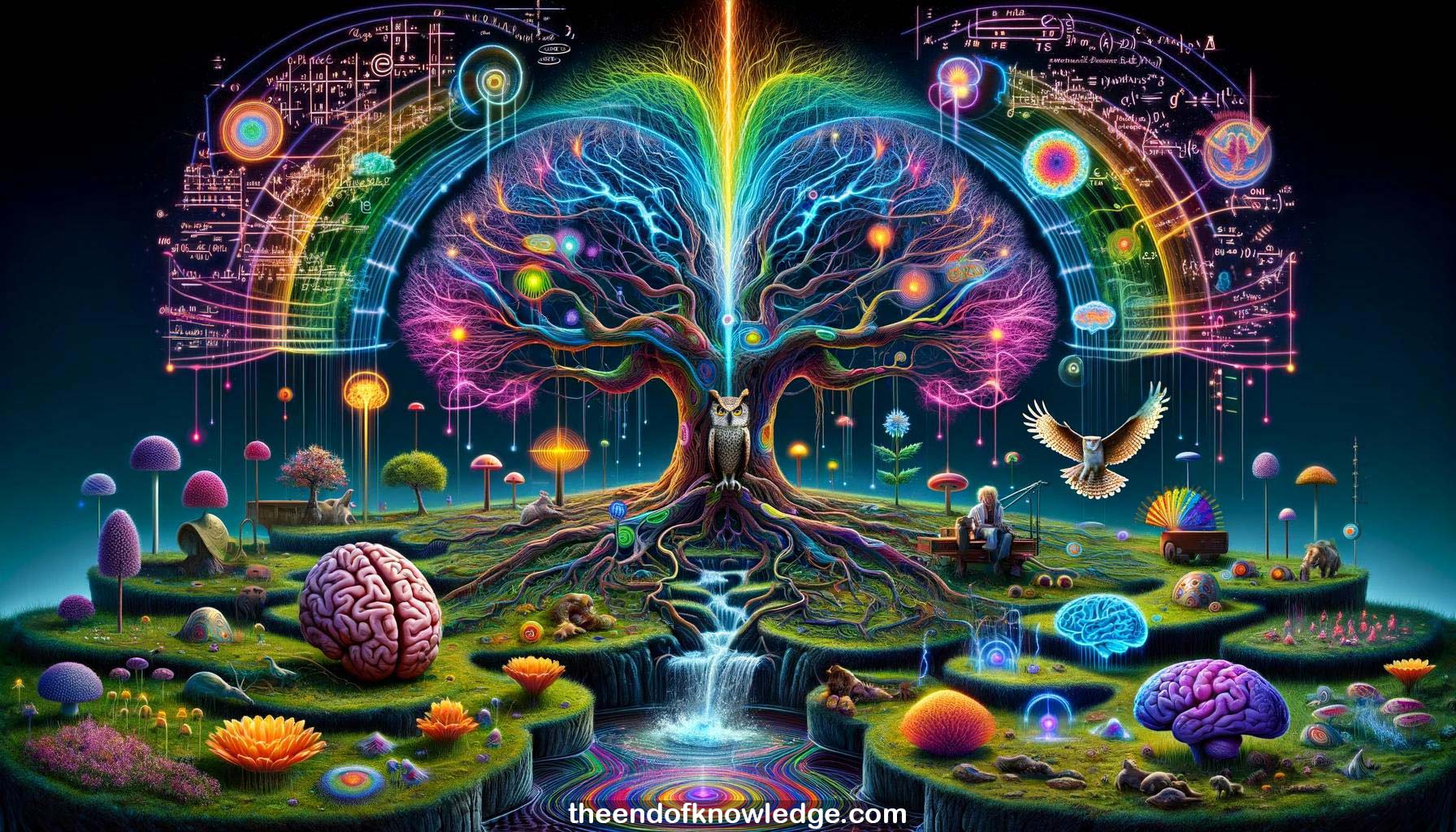 >
>
Concept Graph & Resume using Claude 3 Opus | Chat GPT4 | Llama 3:
Resume:
1.-Alex presented on precisely triggering TMS experiments for medical applications at the BCI school hosted by Christoph.
2.-Alex works at the Higher School of Economics in Russia, which has grown into a large university with various departments.
3.-Alex's team develops machine learning solutions for analyzing data from compact, mobile sensors of magnetic fields around the brain.
4.-The talk focused on tracking brain readings accurately to determine how the brain processes external information based on its state.
5.-Brain rhythms (alpha, theta, delta, beta, gamma) determine the brain's context for processing information and reflect excitatory/inhibitory states.
6.-Studies show brain rhythms influence perception, attention, memory, language; synchronization of brain regions is key for communication.
7.-Brain states are transient; motor evoked potentials, memory performance, and simultaneity judgments are modulated by brain oscillation phases.
8.-Some studies question if rhythmic activity influences behavior/cognition; the brain is nonlinear and changes on small time scales.
9.-Proper tools are needed to study the brain's complex, hierarchical functional systems that switch rhythmically at different paces.
10.-In closed-loop systems, delays from processing EEG data to generating stimuli hinder precise phase tracking of brain oscillations.
11.-Filtering to extract rhythms causes output delays; new algorithms are needed to banish delays and work in real-time systems.
12.-Alex's team developed a hardware-powered ultra-low latency system (HARPOOL) to track oscillatory brain states on an EEG device.
13.-HARPOOL runs on the EEG device processor, avoids PC data transfers, works in real-time, and triggers stimuli at target phases.
14.-State space tracking using Kalman filters and modeling observation noise outperforms previous autoregressive forward modeling approaches.
15.-HARPOOL extends state space tracking, models 1/f brain noise, and is implemented on an EEG device for real-time phase tracking.
16.-Both oscillation phase and amplitude are important; state space approaches allow efficient computation of instantaneous amplitude and phase.
17.-HARPOOL was validated with simulations, real data, and phantom experiments; it showed expected modulation of motor evoked potentials.
18.-HARPOOL was used for cortical muscle representation mapping with TMS; inhibitory phases yielded weaker motor evoked potentials.
19.-Excitatory phases revealed spatially disentangled muscle representations in motor cortex compared to phase-agnostic or inhibitory stimulation.
20.-HARPOOL enables TMS brain network exploration, diagnostics, and efficient mapping; it can also guide TACS phase and neurofeedback.
21.-Challenges remain, including combining heart and brain activity tracking, positioning TMS coils, and EEG spatial resolution limitations.
22.-High-density EEG with up to 1024 electrodes, combined with inverse/forward modeling, may improve spatial resolution in the future.
23.-The team's TMS phantom experiments had some variability; they plan to use subjects with pronounced sensorimotor rhythms for refinement.
24.-Modeling can help determine optimal EEG electrode height for TMS; peeling watermelon skin may improve their phantom setup.
25.-Heart-brain interaction can be incorporated as an extra condition in HARPOOL to reduce variability in brain state tracking.
26.-The HARPOOL approach could work for fNIRS and fMRI-compatible EEG neurofeedback, but hypotheses are needed for the latter.
27.-Alex's team is working on ECOG-based speech mapping, aligning passive and active cortical mapping results using machine learning.
28.-They achieved reasonable accuracy decoding pronounced words from pre-speech ECOG data, but failed with imagined speech so far.
29.-Precise electrode placement is crucial for imagined speech decoding; legal limitations in Russia hinder optimal subject recruitment.
30.-Despite travel difficulties, Alex and Christoph hope to collaborate further and meet in person when circumstances allow.
Knowledge Vault built byDavid Vivancos 2024